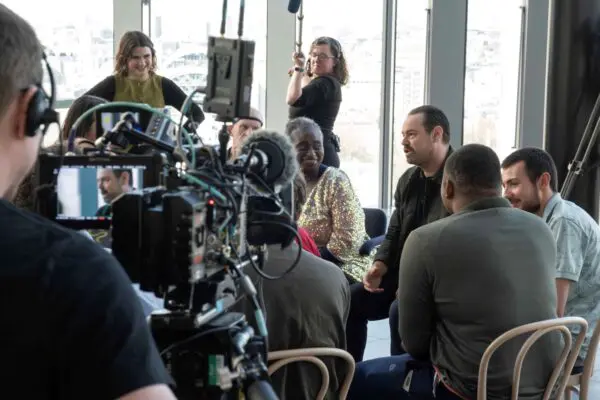The team behind the series reveal how it gets made and how it has evolved over time…
Engineering manager Ian Dewar has worked on Springwatch since the first show. “My background is in BBC Sport outside broadcasts,” Dewar shares, “we’ve borrowed that technology and transplanted it into natural history to get small cameras into nests in remote places.”
He adds: “The show has grown over the years. On the first site in Devon we used 6km of armoured fibre [for the cabling]. One of the problems with optical fibres is that they attract vermin! At the new site in Wales we’re using 63km of cable. From the compound to the studio in the nature reserve is a distance of 1.5km and the furthest nests are 2.5km away. All the ground is protected – it’s a Site of Special Scientific Interest – so you can’t just dig willy nilly and I’ve got to cross a road twice and a river. Having spent a lifetime working in multi-camera live TV events, I’m an adrenaline junkie. When I see the red light go on, there’s nothing quite like it.”
Since 2005, remote camera operator Jo Charlesworth has operated the mini-cams that take TV audiences into the homes of the birds and animals. Charlesworth recalls: “When I started we used CCTV cameras – at the time that was about as good as quality as we could get without spending huge amounts. We filmed most of the small birds in nest boxes, which we made with holes for the cameras.
The camera operator shares: “Now, as much as possible I’m using kit brought in from specialist companies, but I really enjoyed the ‘Heath Robinson’ homemade stuff and I still do a bit. I recently bastardised some central heating timers so we could switch on infra-red lights to film birds in the dark. We’re using professional, broadcast-quality cameras now. When you’re looking at small birds there’s so much detail in the feathers, so you want to be able to see it as well as you can. Modern high-definition mini-cams are the size of an iPhone but birds aren’t stupid – they can see cameras but as long as they don’t think it’s going to eat them they get used to them.”
Live streaming producer Phil Windley has been bringing the intimate lives of wildlife to the web since 2007. He explains: “All the feeds from the mini-cams come into an outside broadcast truck equipped with a bank of monitors. A team of story developers, working in shifts, select and record for playback in the TV programme the most exciting animal behaviour from all of the feeds coming in. They can also switch down those feeds on to the web. The audio and video streams that the story developers decide to capture is then routed to equipment that encodes it into Adobe Flash format for the web. The data is uplinked by small satellite dishes to a satellite orbiting the Earth and then downlinked to Milton Keynes before being relayed to distribution servers and the viewing public, a round trip of approximately 77,500km.”
What’s the most memorable story the show has covered so far? Windley chooses “the cannibalistic behaviour of the barn owls who ate their little siblings at the Lost Gardens of Heligan in Cornwall. [It] was a great story that had web viewers gripped.”







